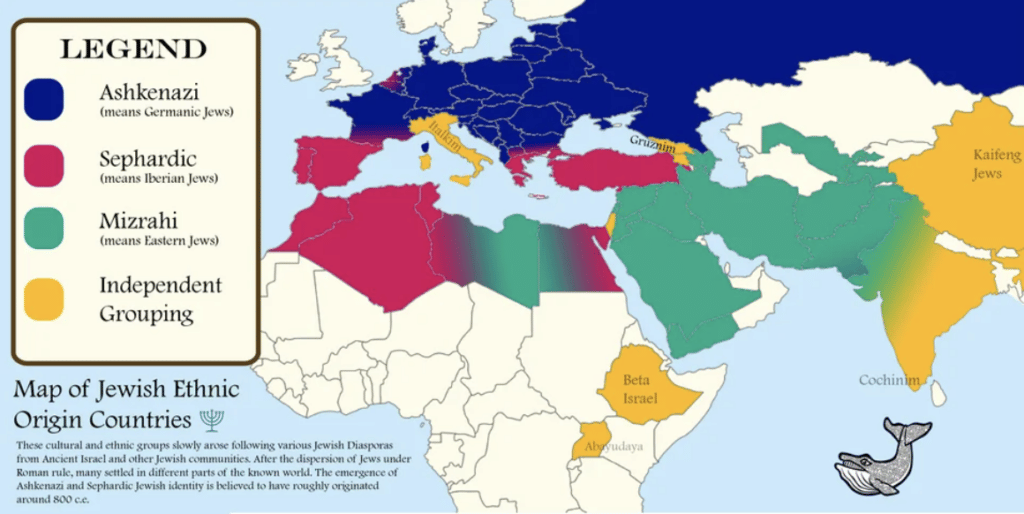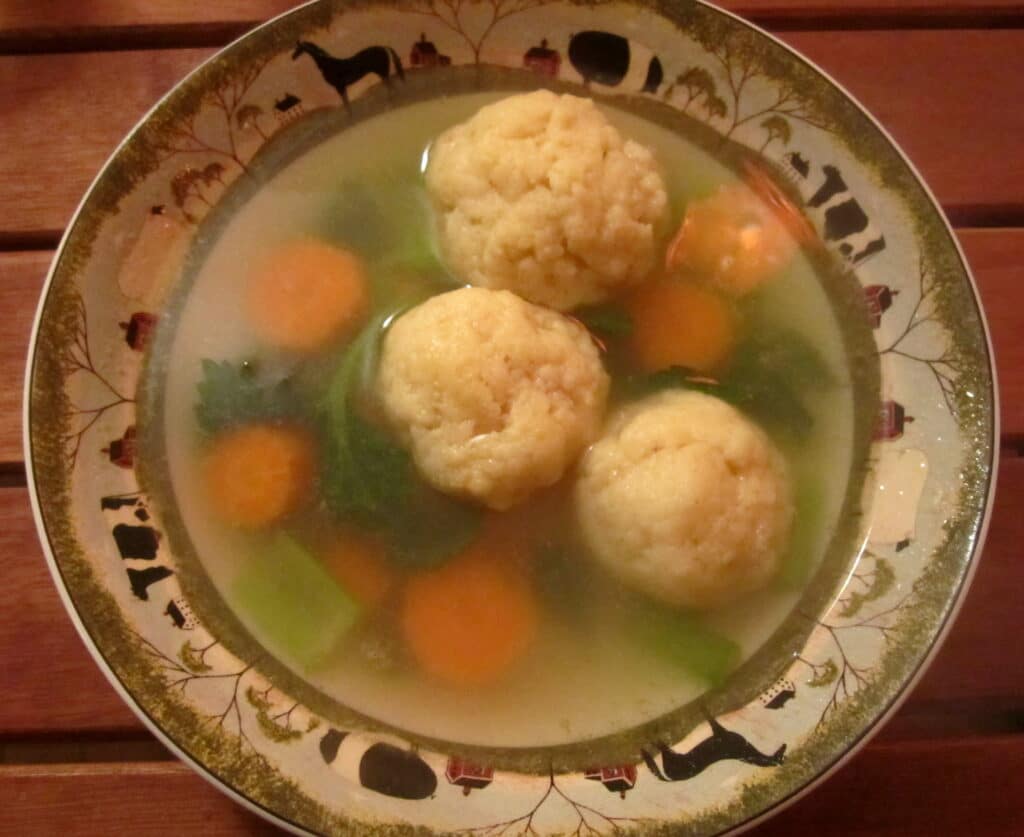In America, if someone is picturing a Jew, it’s probably an Ashkenazi one. That’s because of the roughly seven million Jews in America, only about half a million aren’t Ashkenazi. But that’s not true across the world.
In Israel, the majority of Jews are not Ashkenazi! And yet, most Americans don’t know the first thing about other types of Jews — specifically, Sephardic culture. So, in no particular order, here are five surprising differences between Ashkenazi and Sephardic Jews.
Before getting into the list, here’s a quick review of who these two groups are. Ashkenazi Jews originally came from Germany, France, and Eastern Europe, while Sephardic Jews were originally from Portugal and Spain and they later lived in all of these places:

Notably, there’s a lot of overlap in who lived where, and not all Jews neatly fit into these two categories. Not by a long shot. Mizrahi Jews, for instance, are largely from the Middle East, and they share many customs with Sephardic Jews, so much so that, in Israel, many think of them as one group. There are also Ethiopian Jews, Italkim, and many others. In America, though, Ashkenazi and Sephardic Jews are the two biggest groups. And living in these separate areas created many differences, beyond just the shade of the color of their skin.
1. The food
Bagels, matzo ball soup, gefilte fish, and kugel are all Ashkenazi. They come from countries where Ashkenazi Jews used to live, and they’re still served in those countries under different names. Think cold-weather Eastern European fare.

On the other hand, adafina, shakshuka, and mofletta are all Sephardic. Coming from warmer countries, they’re often more colorful and spicier. In other words, both groups adapted dishes from the countries where they lived.

There are foods that both groups eat, such as challah and cholent, but the recipes can look quite different. Both groups also have a long tradition of keeping Kosher, the Jewish dietary rules. But within that, there are notable differences.
On Passover, for instance, while neither eat bread, Ashkenazi Jews also traditionally don’t eat kitniyot, which include rice, beans, corn, peanuts, and other foods. It makes for very different dishes at the Seder. It also means that on Passover, some Ashkenazi Jews aren’t able to eat at a Sephardic Jew’s house, if both are traditionally observant in their own ways. Jews can go their entire life without realizing there’s a whole other variety of Jewish recipes that they didn’t know existed, and look nothing like the dishes they grew up with.
2. The prayers and music
The prayer services of both groups have the same structure and greatly overlap in terms of wording. But even though most of the wording is the same, the melodies are quite different. Here’s an Ashkenazi one:
And here’s a Sephardic one:
Elements of the synagogue, such as how the seats are arranged, are also quite different. You can even hear the cultural influences in popular music in Israel through the years. Many of the Israeli folk songs came from Ashkenazi tunes. And today, Israeli pop music has a lot of Sephardic and Mizrachi influences.
3. The languages
Yiddish, which combined Hebrew with German, was only spoken by Ashkenazi Jews. So they were the ones busy “noshing” and “kvetching.” Sephardic Jews had a variety of other languages, including Ladino and Ḥakitía, which, in part, combine Hebrew and Spanish, to name just a couple of the many languages. Both Ashkenazi and Sephardic Jews continued to maintain Hebrew, but they had different ways of pronouncing certain letters and words. Many learned Hebrew in order to both pray and understand the holy texts. These days, both sides mostly speak the language of the country where they’re living.
4. The laws and traditions
Jewish laws go all the way back to the Torah and Talmud, predating the split between the Ashkenazi and Sephardic communities, so they share many of the same laws, such as the general rules around keeping kosher and Shabbat. But for hundreds of years, although there was always some communication between the two sides, the two groups developed independently.
At one point, in the 1500s, it was incredibly difficult to sort through and understand which Jewish laws to follow. So, at roughly the same time, both the Sephardic and Ashkenazi communities started working on collecting their rules in one place.
For a while, neither side realized the other side was simultaneously working on a similar project. When they realized this was happening, rather than creating two separate law books, they combined them into one comprehensive Jewish book of rules called the Shulchan Aruch. It had an add-on, a gloss, that called out the variations between the Sephardic and Ashkenazi traditions.
Here are a couple of examples of the many rules and customs (minhagim) that are different between the two groups:
- Sephardic Jews will name a child after a living relative, whereas Ashkenazi Jews will only name a kid after someone who has passed away.
- At weddings, only Sephardic brides traditionally get henna and it’s only Ashkenazi brides who circle the groom seven times.
5. The Movements
This difference is more abstract and gets to the very heart of who these two groups are. Most often, when Americans think about the different types of Jews, it has to do with the denominations, such as Reform, Conservative, and Orthodox. But this separation between the movements only happened on the Ashkenazi side. The Reform Movement splitting off from traditional Judaism was, in part, influenced by the Protestants splitting off from the Catholics.
Sephardic and Mizrahi Jews had no such reference point. They developed in a completely different manner. In his book, “The Wondering Jew,” Israeli philosopher Micah Goodman explains: “The movements and countermovements that complicated Jewish identity in Europe barely touched Jews in the Muslim world.”
While Jews faced serious troubles under both Christian and Muslim rule, only the first of those sets of circumstances led to a division between Reform, Conservative, and Orthodox Jewry. The influence of their different environments colored the very way in which they saw the world.
Conclusion
Today, Ashkenazi and Sephardic Jews are no longer geographically isolated from each other. There’s a lot more interaction between the two. Despite the many differences, both sides share a core connection to the Jewish world. There’s something special so many Jews feel when they meet other Jews elsewhere in the world. It allows a traveler to jump into a local Jewish community in South America, excited to find a synagogue or hear Hebrew, even if it’s different from what they’re used to.
